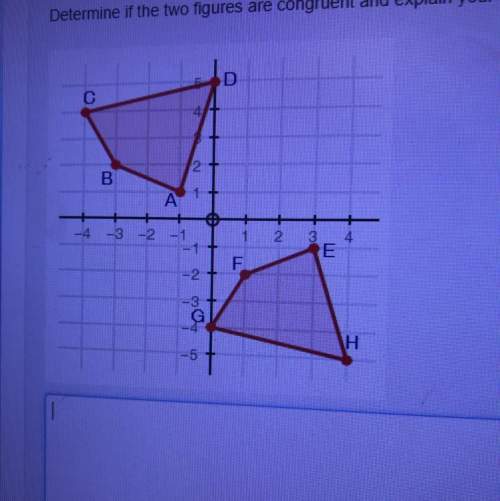
Mathematics, 15.04.2020 15:29 holaadios222lol
Let T: ℝm → ℝn and S: ℝn → ℝp be linear transformations. Then S ∘ T: ℝm → ℝp is a linear transformation. Moreover, their standard matrices are related by [S ∘ T] = [S][T]. Verify the theorem above by finding the matrix of S ∘ T by direct substitution and by matrix multiplication of [S][T]. T x1 x2 = x2 −x1 , S y1 y2 = y1 + 5y2 2y1 + y2 y1 − y2

Answers: 3
Another question on Mathematics

Mathematics, 21.06.2019 13:10
Two different linear functions are shown below with two points given from each function. use slope-intercept form or point-slope form to find the equation of each. linear function a points: (–5, –2), (–5, 7) linear function b points: (7, –5), (–2, –5) function a has: the equation of line a is: function b has: the equation of line b is:
Answers: 1

Mathematics, 21.06.2019 15:10
Marcus needs to rewrite f(x) = x2 + 6x + 4 in vertex form.
Answers: 1

Mathematics, 21.06.2019 17:30
How many kilometers are equal to 5 miles? use 1 mile ≈ 1.61 kilometers. !
Answers: 2

You know the right answer?
Let T: ℝm → ℝn and S: ℝn → ℝp be linear transformations. Then S ∘ T: ℝm → ℝp is a linear transformat...
Questions

Mathematics, 04.03.2021 23:50



Mathematics, 04.03.2021 23:50


Mathematics, 04.03.2021 23:50



Mathematics, 04.03.2021 23:50


English, 04.03.2021 23:50


Mathematics, 04.03.2021 23:50


Computers and Technology, 04.03.2021 23:50


English, 04.03.2021 23:50

Mathematics, 04.03.2021 23:50






